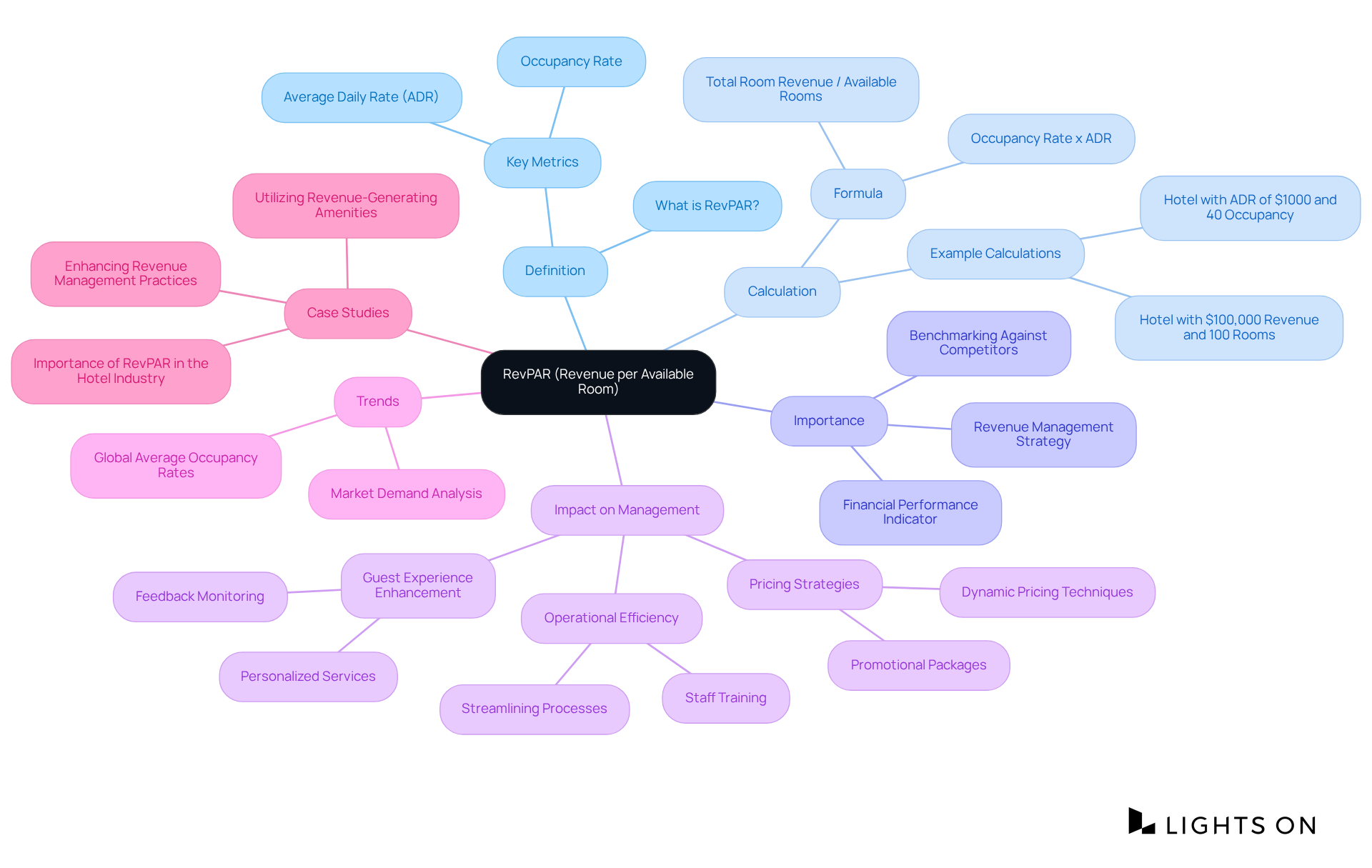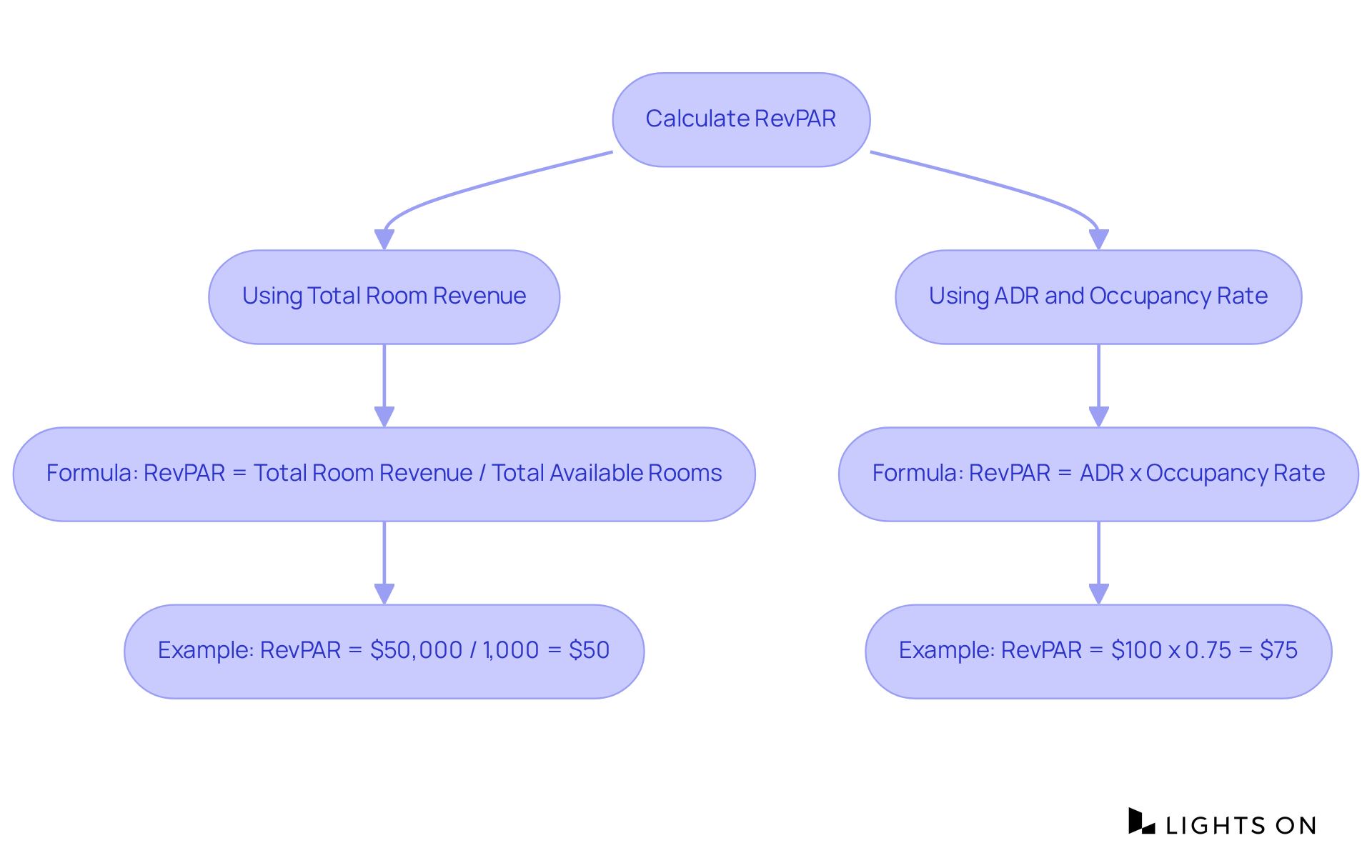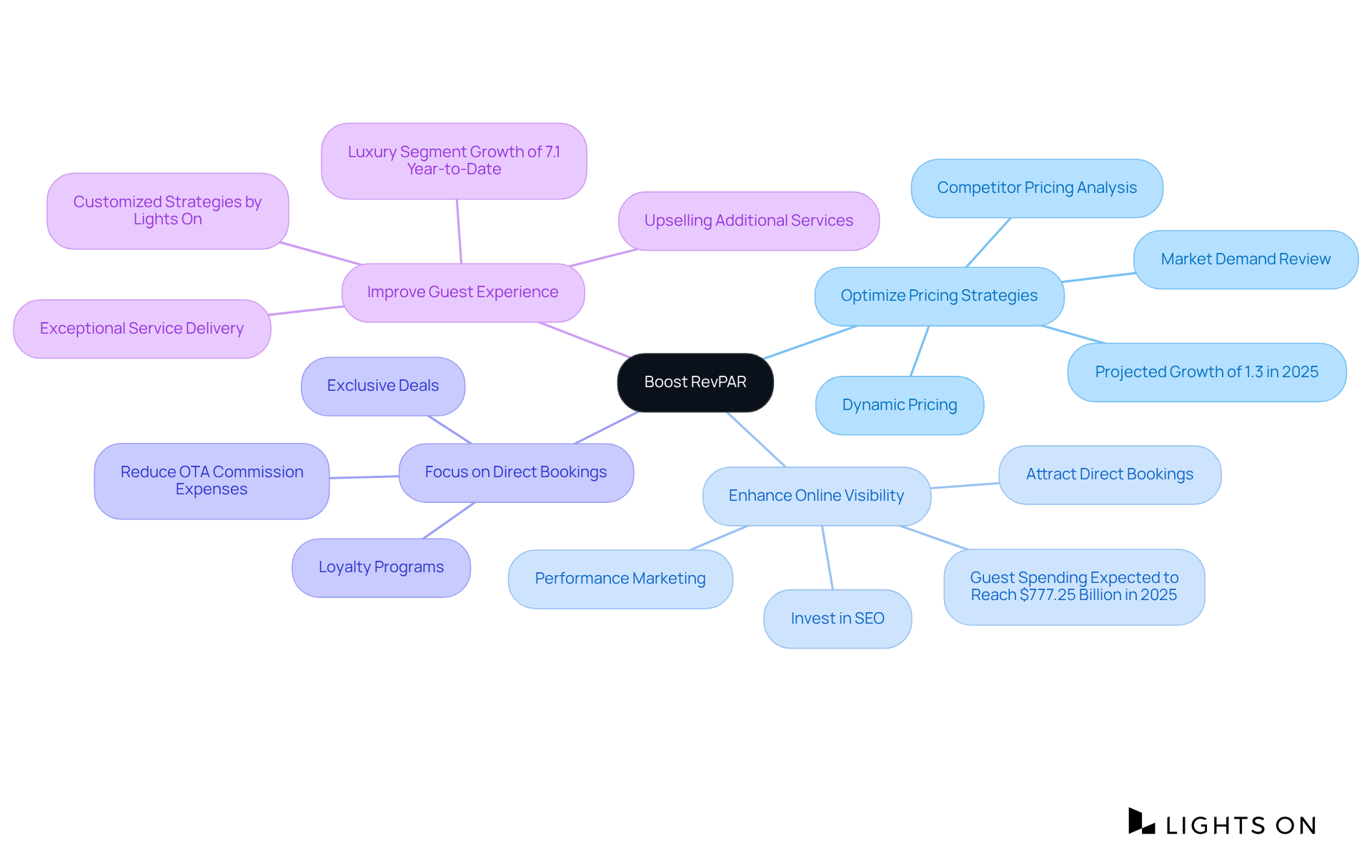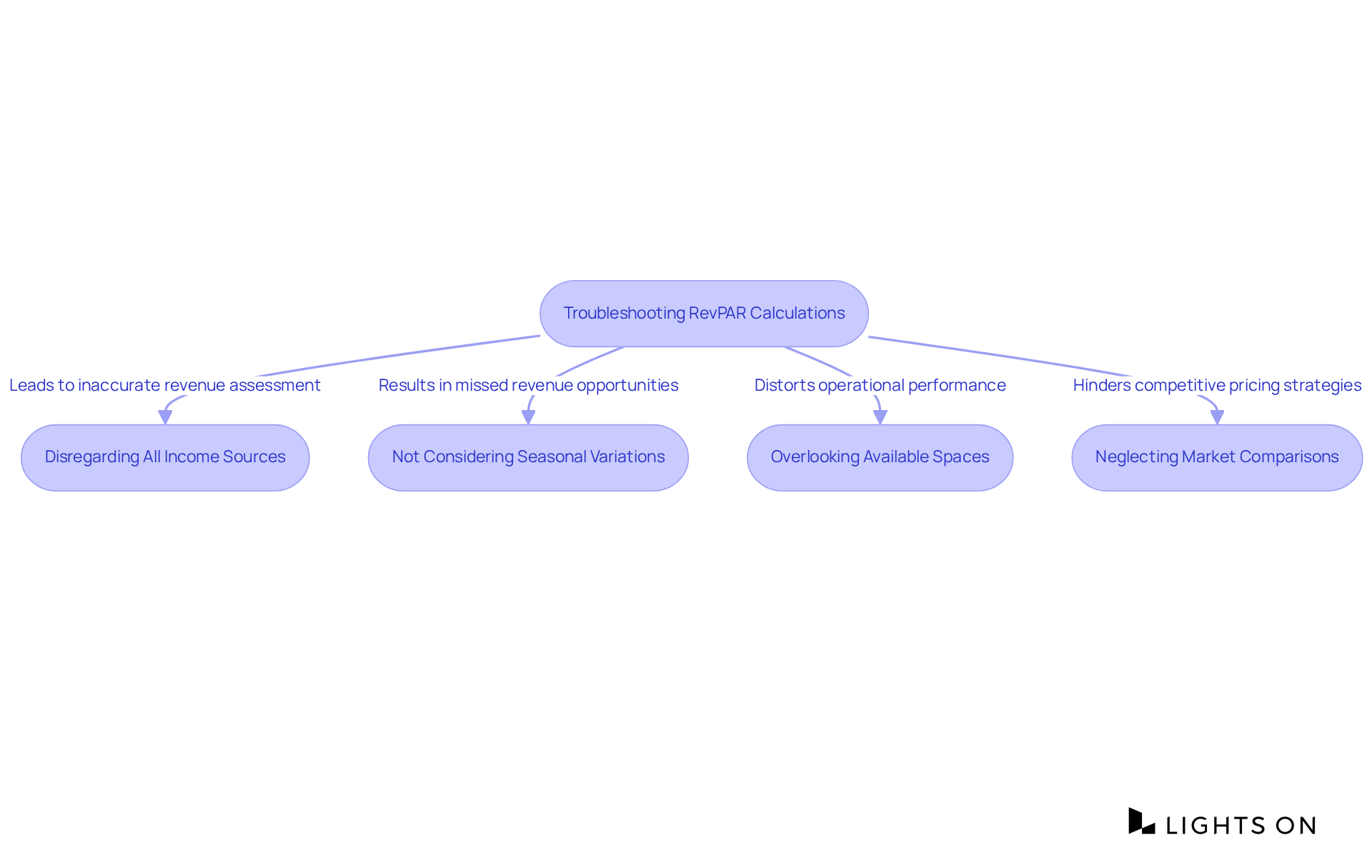This article delves into the calculation and optimization of the RevPAR (Revenue per Available Room) formula, a critical metric for assessing a hotel's income-generating efficiency. It outlines various calculation methods and effective strategies for improvement, while also highlighting common pitfalls to avoid.
Mastering RevPAR is not merely an academic exercise; it can profoundly enhance financial performance and strengthen competitive positioning within the hospitality market. By understanding and applying these insights, hotel and restaurant owners can take decisive steps toward optimizing their revenue strategies.
Understanding the intricacies of the RevPAR formula is essential for anyone involved in the hospitality industry, as it serves as a vital indicator of a property's financial performance. This guide delves into the steps required to calculate and optimize Revenue per Available Room, offering hoteliers valuable insights into enhancing their income-generating capabilities. However, as competition intensifies and market dynamics shift, property managers must ask themselves: how can they effectively leverage this metric to not only survive but thrive?
The revpar formula, or Revenue per Available Accommodation, is a crucial metric in the hospitality sector, essential for assessing a property's income-generating effectiveness from its available spaces. This figure is calculated using the revpar formula, which divides total accommodation income by the total number of available accommodations over a specific period. For instance, if an accommodation generates $100,000 in room earnings with 100 available rooms, the income per available room would be $1,000, indicating the average earnings produced per room.
Understanding the revpar formula is vital for property owners and managers, as it offers . An increase in income per available room, as calculated by the revpar formula, signifies improved financial generation capabilities, which are crucial for maintaining profitability in a competitive environment. Recent trends indicate that accommodations are increasingly focusing on enhancing their revenue per available room by utilizing the revpar formula through dynamic pricing and targeted marketing strategies, particularly in 2025, when the global average occupancy rate for lodgings was noted at 66% in September 2022.
Furthermore, the revpar formula evaluates a property's revenue per available room in relation to its competitors and serves as a valuable tool for identifying strengths and weaknesses in revenue performance. The RevPAR Index is derived using the revpar formula, which involves dividing a property's revenue per available room by the overall revenue per available room of a sample group, expressed as a percentage. For example, if an accommodation has a revenue per available room of $150 while its competitors average $160, applying the revpar formula, its revenue per available room index would be 93.75, highlighting areas for improvement.
Case studies illustrate the importance of the revpar formula in enhancing financial performance. Accommodations that effectively leverage income-generating features and offerings can significantly boost their revenue per available room by applying the revpar formula to create attractive packages that draw visitors. Additionally, investing in employee development and enhancing guest experiences can lead to increased occupancy rates, further elevating revenue per available room. As Matthew DiLallo emphasizes, the revpar formula indicates that increasing revenue per available room reflects enhanced hotel earnings, whereas decreasing figures imply weakening performance.
In summary, mastering the room income formula empowers hoteliers to make informed decisions that enhance their management strategies and overall financial performance, ultimately positioning their properties for success in a competitive market.

To calculate RevPAR, there are two primary methods you can employ:
Using Total Room Revenue:
Using Average Daily Rate (ADR) and Occupancy Rate:
Both methods provide valuable insights into your hotel's performance. Utilizing them in tandem offers a comprehensive view of your . In 2025, the average daily rate (ADR) is projected to be approximately $131.25, and occupancy rates can significantly influence revenue per available room calculations. Additionally, the overall income for the hospitality sector is estimated at $52,500, which contextualizes these calculations.
Tracking the revenue per available room index score is essential; a score above 100 indicates superior performance relative to competitors. For instance, a determined revenue per available room for an establishment in September was $500, exemplifying potential income performance in a real-world scenario. By consistently monitoring these metrics, hotels can refine their strategies to enhance profitability and overall performance.

To effectively boost your RevPAR, consider implementing the following strategies:

When calculating RevPAR, it is crucial to avoid these common pitfalls:
In a case study assessing revenue per available room performance, it was emphasized that properties should track historical performance, market rivals, and budget objectives to ensure their revenue per available room meets or surpasses expectations. Furthermore, expert insights highlight that failing to consider all revenue sources can distort financial performance, leading to ineffective revenue strategies. By recognizing and addressing these common mistakes, hotel owners can enhance their financial outcomes by applying the revpar formula to their RevPAR calculations.

Mastering the RevPAR formula is essential for hospitality professionals seeking to enhance their property's financial performance. Understanding and applying this critical metric empowers property owners and managers to make informed decisions that directly impact their revenue generation capabilities. The RevPAR formula not only provides insights into individual property performance but also facilitates strategic comparisons with competitors, fostering a competitive edge in the market.
Throughout this article, we have discussed key points, including the definition and importance of RevPAR, methods for its calculation, strategies to optimize it, and common pitfalls to avoid. The emphasis on dynamic pricing, enhancing online visibility, and improving guest experiences underscores actionable steps that can significantly boost revenue per available room. Furthermore, recognizing the importance of thorough calculations and market comparisons ensures that hoteliers can accurately assess their performance and identify areas for improvement.
Ultimately, the significance of RevPAR extends beyond mere numbers; it serves as a compass guiding hotel management towards profitability and success. By embracing the strategies outlined and continuously refining their approaches, hospitality professionals can not only increase their RevPAR but also elevate the overall guest experience. Taking proactive steps to master the RevPAR formula is a crucial investment in the future of any accommodation business.
What is RevPAR and why is it important?
RevPAR, or Revenue per Available Accommodation, is a key metric in the hospitality sector that assesses a property's income-generating effectiveness from its available spaces. It is important because it provides insights into occupancy and pricing strategies, helping property owners and managers maintain profitability.
How is RevPAR calculated?
RevPAR is calculated by dividing total accommodation income by the total number of available accommodations over a specific period. For example, if an accommodation generates $100,000 in room earnings with 100 available rooms, the RevPAR would be $1,000.
What does an increase in RevPAR indicate?
An increase in RevPAR signifies improved financial generation capabilities, which are crucial for maintaining profitability, especially in a competitive environment.
How does RevPAR relate to occupancy rates?
RevPAR evaluates a property's revenue per available room in relation to occupancy rates, indicating how effectively a property is generating income from its available accommodations.
What is the RevPAR Index?
The RevPAR Index is derived from the RevPAR formula and is calculated by dividing a property's revenue per available room by the overall revenue per available room of a sample group, expressed as a percentage. This index helps identify areas for improvement compared to competitors.
How can accommodations improve their RevPAR?
Accommodations can improve their RevPAR by utilizing dynamic pricing, targeted marketing strategies, creating attractive packages, investing in employee development, and enhancing guest experiences to increase occupancy rates.
What does a decrease in RevPAR indicate?
A decrease in RevPAR implies weakening performance and can reflect challenges in generating income effectively from available accommodations.
Why is mastering the RevPAR formula important for hoteliers?
Mastering the RevPAR formula enables hoteliers to make informed decisions that enhance their management strategies and overall financial performance, positioning their properties for success in a competitive market.
Transform your group booking strategies with Lights On and watch your occupancy soar.